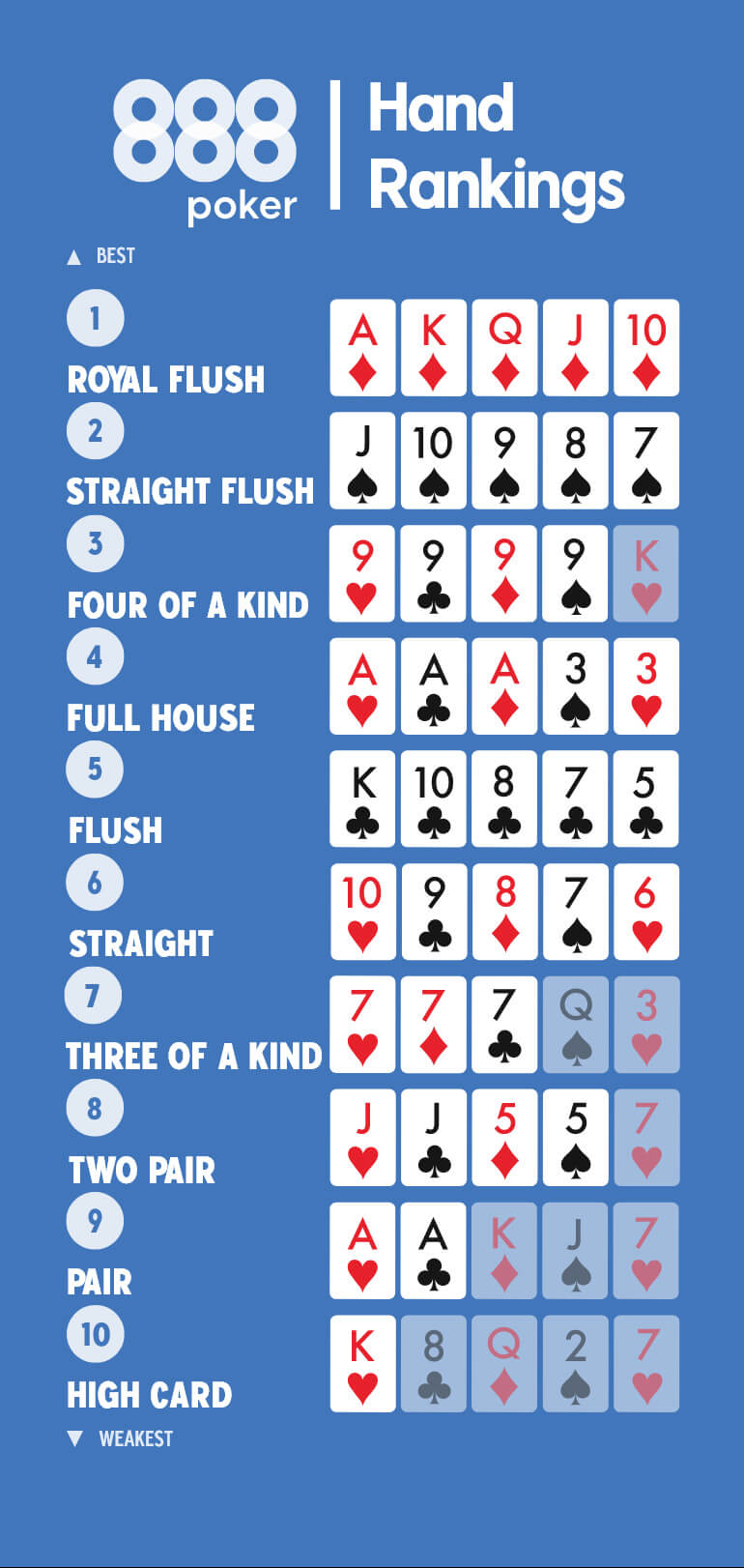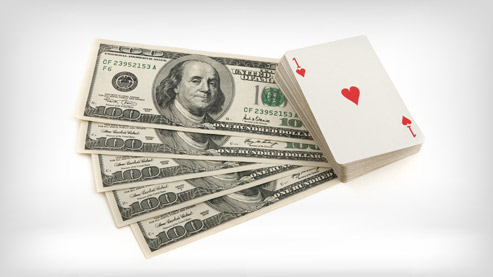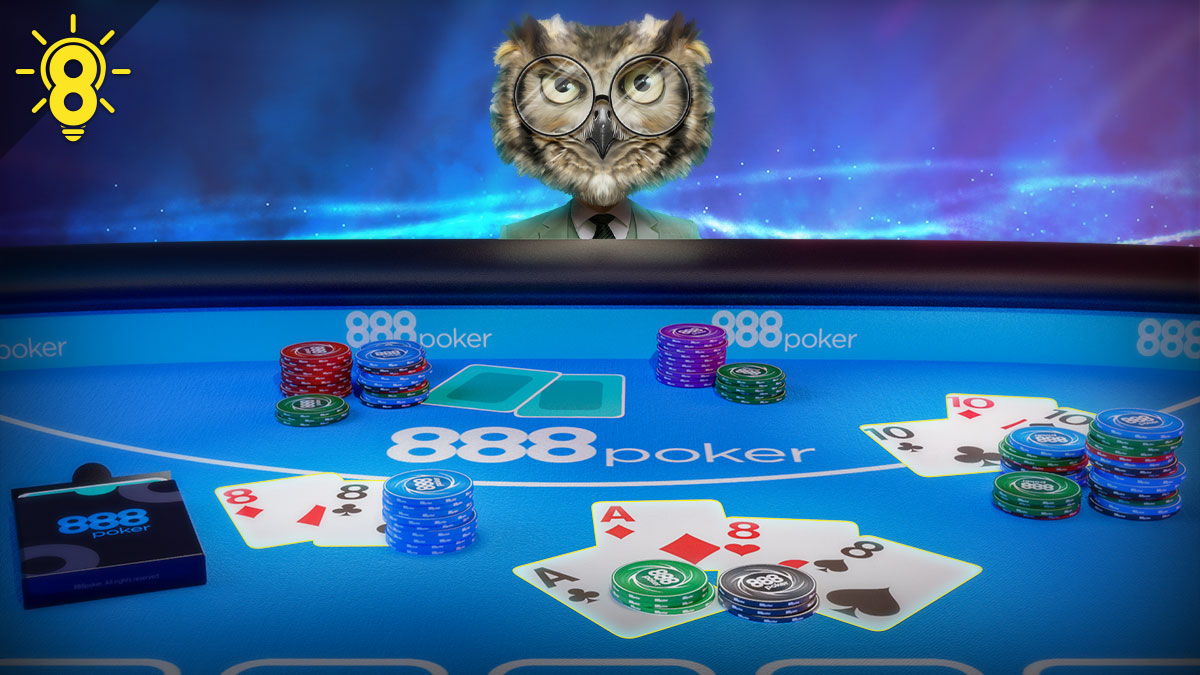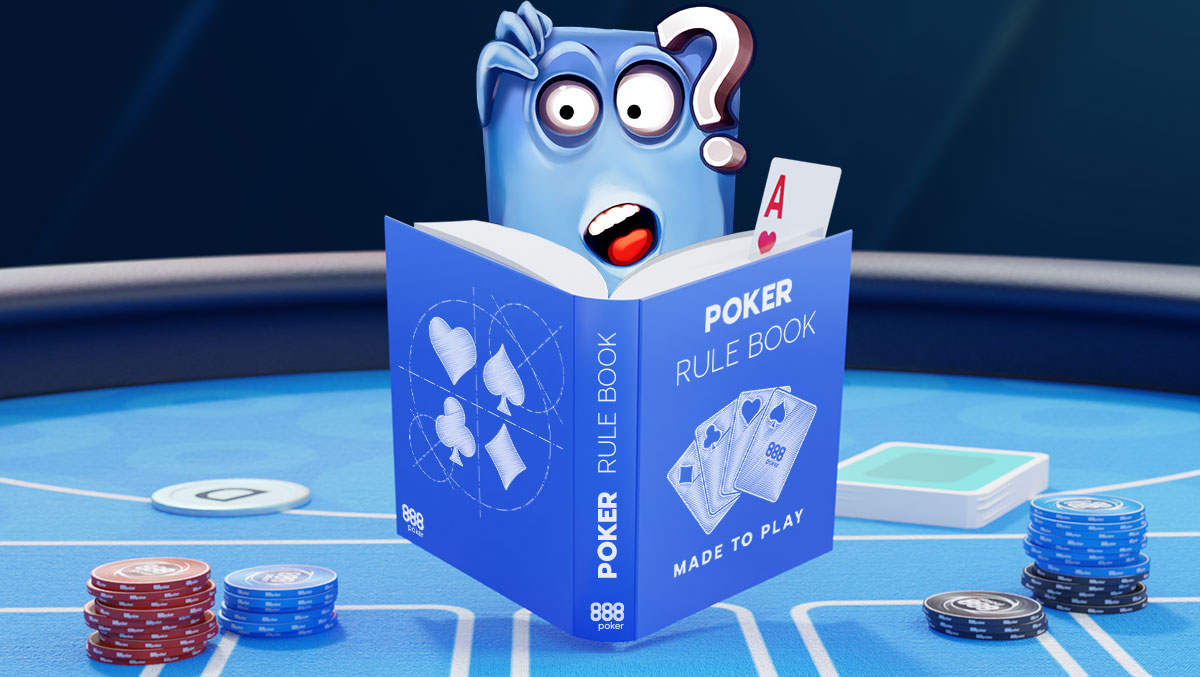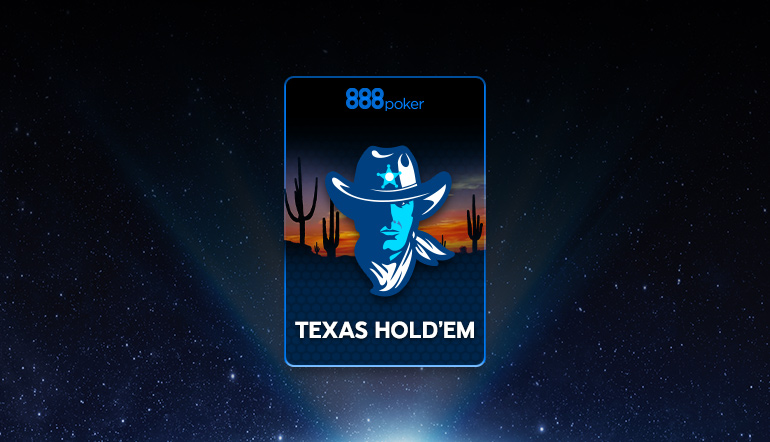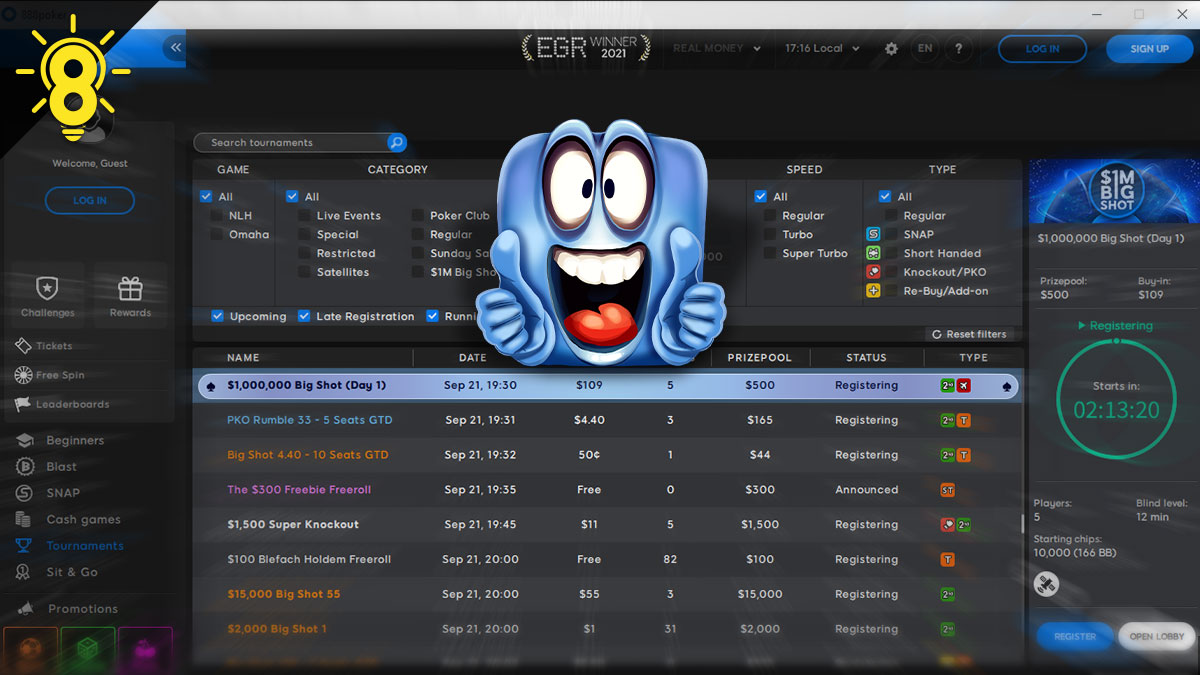That’s the old saying about the game of poker. If you’re interested in learning how to play poker, you’ve come to the right place.
We are trying to keep things simple as we explain the poker rules and dynamics that determine how to play.
We’ll be using No-Limit Texas Hold’em, the most popular form of poker, as the prime example, and touch upon some other variants to give you an idea of what they are.
Among the topics we’ll cover are:
- How to Win at Poker
- Poker Hand Rankings
- How to Play the Game (The Flop, Turn and River)
- Dealer Button and Blinds
- Tournaments vs Cash Games
- Variants of Poker
How to Win at Poker
The goal of cash games is to win money, in tournaments you want to be at the top of the chip leader-board to claim the big prizes. They work a little differently and will be covered in more detail later. The aim is the same, have the best hands at the right time to win the pot.
To win at poker, you either have to bluff your opponents or hold the best hand at the end (aka the “showdown”). In poker, you’re looking to make the best possible five card hand. Your holdings can range from a high card up to a Royal Flush.
Poker Hands Rankings
Here’s a look at the best possible hands that can be used in standard poker rules, in descending order:
- Royal Flush: This hand is the rarest in poker. It’s when you make a ten-to-ace straight all in the same suit such as A♦K♦Q♦J♦T♦
- Straight Flush: Five consecutive cards of differing suits, like 8♠7♠6♠5♠4♠, then you have a straight flush.
- 4-of-a-Kind: The name says it all! If you have all four of the same card, like A♠4♠4♣4♥4♦ then you have quads!
- Full House: Also known as a “boat,” it’s when you have three of a kind along with a pair - for example: A♦A♣A♥J♥J♠ (three of one, two of the other)
- Flush: There are four suits in poker (diamonds, hearts, spades, and clubs). When you have five cards all in the same suit, you have a flush. An example might be A♥J♥8♥4♥2♥
- Straight: Five consecutive cards of differing suits, like 8♥7♣6♦5♦4♠ is a straight. An A-2-3-4-5 straight is known as a “wheel,” while 10-J-Q-K-A is called “Broadway.”
- 3-of-a-Kind: Whenever you have three of the same cards (i.e. A♠K♥5♠5♦5♣) you have three-of-a-kind. If you make three-of-a-kind with a pair in the hole and one on the board, it’s “a set.” If you make it with two on the board and one card in the hole, then it’s called “trips.”
- Two Pair: Is when you have not one, but two pairs. The fifth card is your kicker. For instance, if you have A♣K♥5♥K♠5♦ you have kings and fives with an ace kicker.
- One Pair: There are thirteen different cards of each suit. Whenever you match two, it’s called a pair. For example,A♦A♣7♠4♠2♣2 is a pair of aces.
- High Card: If no one can make a ranked hand (different suits, non-connected, unpaired) it comes down to your high card(s). If you have A♣Q♦9♥6♣3♦ then you have ace-queen high.
How to Play the Game
This is going to be a rough guide on how to play a hand using poker rules, with an example listed below. A hand of No-Limit Texas Hold’em begins with each player receiving two cards facedown, called “hole cards.”
Players will always have these options when it’s their turn to act: bet, call, raise or fold.
Players can win a hand by using any combination of their two-hole cards and five community cards on the board to form the best five card hand.
Remember, after players receive their cards, a round of “preflop” betting occurs. Each “street,” or round after that, has a different name.
Flop – The first three community cards dealt are referred to as “the flop”. All remaining players can use these community cards to try and make the best poker hand. Play continues with a round of betting. The action starts with the first player still in the hand who is to the left of the dealer button.
Turn – After completing the round of betting on the flop, another community card is dealt, called the turn (AKA Fourth Street). A total of two hole cards and four community cards are available for active players to try and make the best five-card hand.
Another round of betting takes place. Again, the action starts with the first remaining player seated to the left of the button. Play always continues in a clockwise direction. When all remaining players have acted, the betting round ends.
River – The river (AKA Fifth Street) is the fifth and last community card. A final round of betting takes place. If there’s a showdown – the point where all action is complete – players turn up their hands. The last player to bet, known as the last aggressor, must show first. Whoever holds the best five-card hand wins the pot, This action completes the hand, moving on to a new one.
Example: In a $1/$2 No-Limit Hold’em game, you are first to act after the big blind (more on the blinds below). You are facing a $2 “blind” bet, So, you can either call that amount, raise it, or fold.
Let’s assume you raise to $6 holding the A♦K♣. Everyone else folds around to the player in the big blind, who puts in the extra $4 to call.
The flop comes down A♣5♠6♥ . The player in the big blind is first to act and can either check or bet. There’s no need for the to fold as there is no bet. They wind up checking, and you bet $10 with your top pair.
The player in the big blind calls and the K♦ turns. Again, your opponent checks. You bet $25 with two pair. The big blind calls once more and the 2♣ completes the board on the river.
Your opponent checks, for a third time, and calls when you bet $100.
The action is over, so it’s time to show your cards.
You turn over your two pair (your A♦K♣ plus the A♣K♦6♥ on the board make your best possible five-card hand).
Your opponent shows he was beat as he only had the A♥Q♠ for a losing pair of aces. (Their A♥Q♠ plus A♣K♦6♥ from the board gives them their best possible five-card hand.)
Congratulations, you won a nice pot!
So that’s how a hand works, and you know the poker rules for it, where it gets complicated is how you play your own hand and compete with others. There are a few more things for you to pay attention to, like where the dealer is sitting.
Dealer Button and Blinds
In most games, a dedicated dealer facilitates the dealing. In home poker games, it’s not uncommon for players to rotate the deal among themselves.
If there is a dedicated dealer, a button indicates who has the deal. That button then moves one spot clockwise after each hand. The purpose of the button is to identify where the action should begin each time.
The action always starts with the first person left of the button.
Before any cards are dealt, the player to the direct left of the button must post (pay) the small blind. The player to the left of him must post the big blind.
These “blinds” are forced bets that help give players something chase. Think about it: If there were no blinds in poker, players would never “blind off”. They would never lose chips from always folding preflop.
Players would wait until they had Aces dealt to them, and then go all-in.
For example, if the game was $1-$2 No-Limit Hold’em, the player to the direct left of the button must post a $1 small blind. The player after that has to pay the $2 big blind. These are mandatory “blind bets” and must be posted. If a player refuses according to poker rules, they must sit out of the game.
Tournaments vs Cash Games
When you play poker against other players, you do so in one of two formats – tournament or cash game (AKA ring game) and these each have their own unique poker rules.
The basics outline above are the same, but there are four significant differences.
- Blinds: In cash games, the blinds are always fixed (i.e. $1-$2, $2-$5, etc.) and never increase. While in tournaments, the blinds increase every X-number of minutes, based on the blind structure. They do so to force action and ensure the tournament ends on time.
- Duration: Cash games are convenient as you can come and go as you please. Tournaments are different. Play continues (according to the blind structure) until a winner is crowned.
- Chips: In cash games, each chip has a denomination that corresponds to its real-money In tournaments, chip denominations typically do not have real-money value. For example, in a $100 buy-in tournament, you may receive 10,000 units worth of chips.
- Antes: Antes are like blinds in the sense that they are forced bets taken from players before the start of a hand. They are common in tournaments but do occasionally pop up in cash games. They do not contribute to money used in the first (preflop) round of betting, unlike the blinds.
Antes are merely used to boost the size of the pot preflop. They give players more incentive to fight for the dead money in the middle.
Do note that either “button” or “big blind” antes (one larger-sized ante taken from one player) are replacing traditional antes to save on time. This format is happening especially in tournaments to move the pace of the game along.
As the blinds rotate at the end of each hand, all players will be subject to a button ante, every orbit.
Variants of Poker
While Texas Hold’em is the most popular form of poker, it is far from the only game. There are dozens of variations, with many catching up on Hold’em’s popularity.
Here’s a look at some of poker’s other variants:

